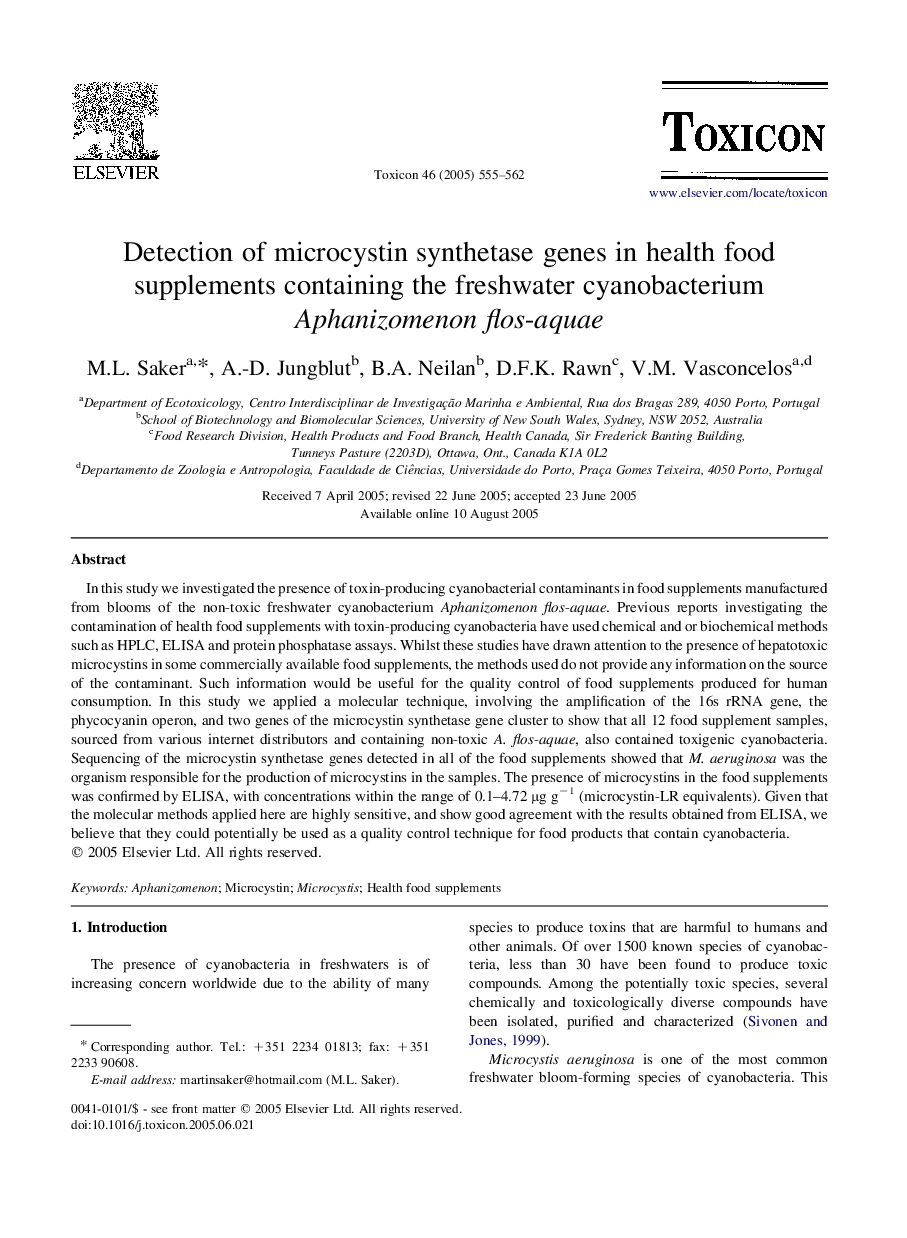| کد مقاله | کد نشریه | سال انتشار | مقاله انگلیسی | نسخه تمام متن |
|---|---|---|---|---|
| 10880241 | 1076944 | 2005 | 8 صفحه PDF | دانلود رایگان |
عنوان انگلیسی مقاله ISI
Detection of microcystin synthetase genes in health food supplements containing the freshwater cyanobacterium Aphanizomenon flos-aquae
دانلود مقاله + سفارش ترجمه
دانلود مقاله ISI انگلیسی
رایگان برای ایرانیان
موضوعات مرتبط
علوم زیستی و بیوفناوری
بیوشیمی، ژنتیک و زیست شناسی مولکولی
بیوشیمی، ژنتیک و زیست شناسی مولکولی (عمومی)
پیش نمایش صفحه اول مقاله

چکیده انگلیسی
In this study we investigated the presence of toxin-producing cyanobacterial contaminants in food supplements manufactured from blooms of the non-toxic freshwater cyanobacterium Aphanizomenon flos-aquae. Previous reports investigating the contamination of health food supplements with toxin-producing cyanobacteria have used chemical and or biochemical methods such as HPLC, ELISA and protein phosphatase assays. Whilst these studies have drawn attention to the presence of hepatotoxic microcystins in some commercially available food supplements, the methods used do not provide any information on the source of the contaminant. Such information would be useful for the quality control of food supplements produced for human consumption. In this study we applied a molecular technique, involving the amplification of the 16s rRNA gene, the phycocyanin operon, and two genes of the microcystin synthetase gene cluster to show that all 12 food supplement samples, sourced from various internet distributors and containing non-toxic A. flos-aquae, also contained toxigenic cyanobacteria. Sequencing of the microcystin synthetase genes detected in all of the food supplements showed that M. aeruginosa was the organism responsible for the production of microcystins in the samples. The presence of microcystins in the food supplements was confirmed by ELISA, with concentrations within the range of 0.1-4.72 μg gâ1 (microcystin-LR equivalents). Given that the molecular methods applied here are highly sensitive, and show good agreement with the results obtained from ELISA, we believe that they could potentially be used as a quality control technique for food products that contain cyanobacteria.
ناشر
Database: Elsevier - ScienceDirect (ساینس دایرکت)
Journal: Toxicon - Volume 46, Issue 5, October 2005, Pages 555-562
Journal: Toxicon - Volume 46, Issue 5, October 2005, Pages 555-562
نویسندگان
M.L. Saker, A.-D. Jungblut, B.A. Neilan, D.F.K. Rawn, V.M. Vasconcelos,